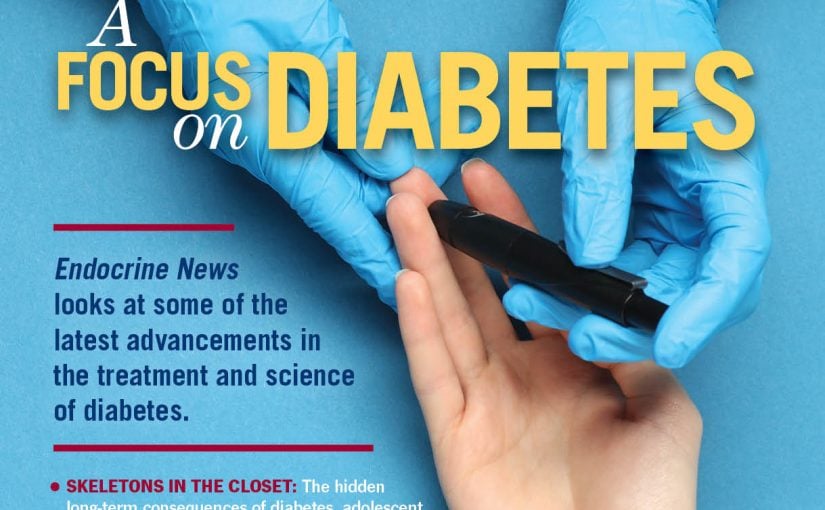Just when you thought it was time to roll up the red carpet, four Endocrine Society members have recently been announced as taking home their fair share of prestigious awards that recognize outstanding leaders in research and science.

First off, the 2025 Breakthrough Prize for Life Science has been presented to Daniel J. Drucker, MD, senior investigator at the Lunenfeld-Tanenbaum Research Institute, Sinai Health, and a university professor in the Department of Medicine at the University of Toronto’s Temerty Faculty of Medicine in Ontario; Canada; Joel F. Habener, MA, MD, chief of Laboratory of Molecular Endocrinology, Massachusetts General Hospital; Lotte Bjerre Knudsen, DMSc, chief scientific advisor and head of the GLP-1 Centre of Excellence at Novo Nordisk; and Svetlana Mojsov, PhD, research associate professor at Rockefeller University in New York, were honored for their roles in the discovery and development of GLP-1-based drugs that have revolutionized the treatment of obesity. They share the award with Jens Juul Holst of the University of Copenhagen.
“These are diseases with a high morbidity and mortality and are attracting greater research efforts to understand the pathophysiology and to develop effective therapies to combat them,” Habener told Endocrine News in a 2020 interview when he won the Warren Alpert Foundation Prize alongside Drucker. “Obesity and its ensuing constellation of ensuing disorders known as the metabolic syndrome include diabetes, steatohepatitis, hypertension, and even dementia and certain types of cancer.”

It’s been quite the past couple of years for these researchers – and the patients they’ve helped. Drucker received the 2023 Wolf Prize in Medicine “for pioneering work in elucidating the mechanisms and therapeutic potential of enteroendocrine hormones,” including “seminal contributions to our understanding of the physiology and pharmacology of glucagon-like peptides and their use for the benefit of patients.”
Drucker’s discoveries of GLP-1, GLP-2, and dipeptidyl peptidase-4 (DPP-4) activity have enabled the development of multiple new innovative classes of medications for the treatment of diabetes, obesity, and obesity-associated comorbidities. He demonstrated that GLP-1 directly stimulates insulin secretion from pancreatic beta cells.
“It’s extremely gratifying to see decades of basic and clinical science translated into innovative medicines with substantial beneficial impact in humans,” Drucker says. “A timely reminder that understanding the science of endocrinology and investing in basic research can provide enormous dividends that improve human health.”
Nicknamed “the Oscars of Science,” the Breakthrough Prize for Life Science recognizes the world’s top scientists. Each prize is $3 million and is presented in the fields of Life Sciences, Fundamental Physics and Mathematics.
“I am very honored to receive the Breakthrough Prize for my contribution to the discovery of GLP- 1 and to join the group of scientists who made major contributions to our knowledge and developed treatments for diseases that improve the health of millions of people,” Mojsov tells Endocrine News.

In other awards news, Mojsov, Knudsen, and Habener also received the Friends of the National Library of Medicine’s (FNLM) 2025 Distinguished Medical Science Award for their groundbreaking contributions to the development of GLP-1receptor agonists (GLP-1Ras), benefiting millions of people worldwide. Previously, Habener, Knudsen, and Mojsov won the 2024 Lasker~DeBakey Clinical Medical Research Award again for their work on GLP-1RAs.
Habener became interested in how the hormone glucagon fits into the puzzle of how the body regulates blood sugar levels in the 1970s. When Habener cloned the gene for glucagon, he discovered that it encodes not only glucagon itself, but also another molecule that resembles glucagon-like-peptide-1.

Mojsov identified and synthesized the physiologically active form of GLP-1 and developed innovative research methods and reagents that detected GLP-1 in the intestines. She developed sensitive and specific radioimmunoassay for GLP-1 and chromatographic methods that allowed her to detect GLP-1(7-37) in rat intestines, a tissue where incretin is secreted. “My studies at the Endocrine Unit and collaborative studies with Gordon Weir proved that GLP-1(7-37) is the long sought after incretin,” she says.
Knudsen was responsible for inventing the first long-acting GLP-1RA. “I suggested as early as 1996 that it should be prioritized for obesity, based on initial promising animal data, as well as the increasing prevalence of obesity,” she says. “I have continued to lead in obesity with early publications documenting effects on a broad range of neurons involved with both homeostatic and hedonic aspect of energy homeostasis.”
FNLM will formally present the award to Habener, Mojsov, and Knudsen at the 2025 Friends of the NLM Awards Gala, to be held on September 8, 2025, at the Willard Intercontinental Hotel in Washington, D.C. The Gala is a premier event bringing together leaders from the medical, library, and research communities to celebrate exceptional contributions to medical science, public service, and health information access.

